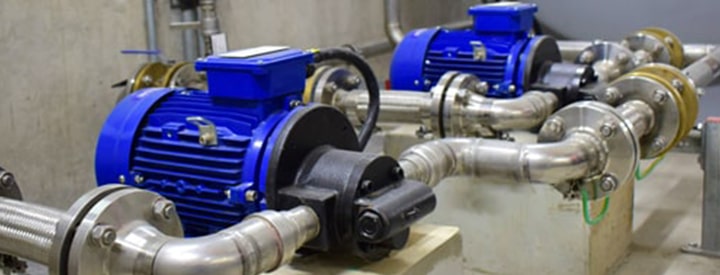Fire pumps are at the heart of fire sprinkler systems because they provide the necessary water that a sprinkler system requires. Due to the increased use of petroleum-based products (i.e. plastics/polymers), denser storage configurations (e.g. multiple-row racks), and higher storage-, a greater percentage of industrial/commercial sprinkler systems are hydraulically more dense in order to control or even suppress a fire. In layman’s terms- pipes are larger, sprinkler orifices (openings) are larger, etc., and a water supply system must deliver higher volume and pressure to meet the hydraulic demands of these sprinkler systems.
Because of the reliance on an adequate water supply, fire pumps must be dependable. They must operate when called upon to do so.
The fact is- many fire pumps fail to operate either adequately or even at all. This failure almost always is a result of poor or even non-existent preventative maintenance. Without recommended preventative maintenance, there is a greater risk that the “heart” of the sprinkler system will not pump.
All fire pumps should be tested for automatic starting by either opening the test valve on the small brass piping coming from the fire pump piping to the power controller (usually labeled) or flowing water from main drain test at a sprinkler riser inch drain or at the inspector’s test connection to start the pump. Electric motor pumps should be started on a weekly basis. The pump should be run through its preset timer for ten (10) minutes. Internal combustion engines (almost always diesel) should also be started on a weekly basis. The pump should be run thirty (30) minutes to bring the engine up to full speed, pressure, and temperature.

Ready to get started on diesel fire pump inspection, repairs or maintenance with All Generator Solutions?
Preventative Maintenance
-
Transfer Switch Scope of Work.
-
Check the AC Line Voltage.
-
Use Voltage Meter to check that all the incoming power is correct.
-
Use HZ Meter to check that all the HZ is correct.
-
Look at the AC power line and check for discoloration.
-
Test all AC connections and adjust if needed.
-
Check the Generator Line Voltage.
-
Use the Voltage meter to check all the incoming power from the Generator is correct.
-
Use HZ Meter to check Generator HZ & adjust as needed.
-
Look at Generator power lines and check for discoloration.
-
Test all Generator power connections and adjust if needed.
-
Look Over all Control wires & relays.
-
Check the condition of all control wires.
-
Look at the condition of all control relays.
-
Test all control wires & relays, adjust if needed.
-
Check exercise clock.
-
Check & adjust exercise clock.
-
Test ATS for proper operation.
-
Check for complete & proper operation.
-
Close power failure switch & record outcome.
-
Clean internal & external of ATS.
-
Clean dust from ATS.
-
Clean any debris left on site.
-
Submit completed inspection report.
-
Advise owner of any needed repairs.
-
Completed report submitted

